Key takeaways:
- Timing significantly impacts email response rates; sending emails early in the morning or post-lunch leads to better engagement.
- Best days to send emails are Tuesday to Thursday, with optimal times between 8-10 a.m. and 1-3 p.m.
- Utilizing tools like Mailchimp and HubSpot can help schedule emails effectively and analyze audience engagement.
- A/B testing and adapting to audience habits can optimize email timing for improved open rates and responses.
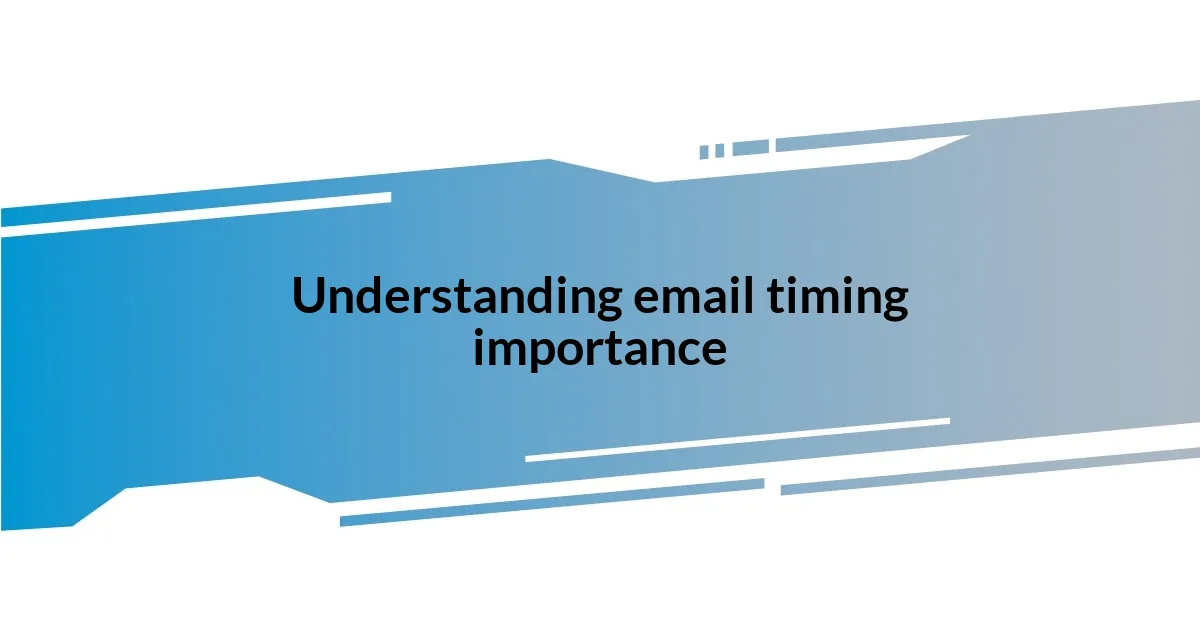
Understanding email timing importance
Timing in email communication can significantly influence your message’s reception. I remember once sending an important proposal late on a Friday afternoon, which meant it got buried under the weekend’s chaos. The response was delayed, and I lost momentum; it served as a powerful lesson on how crucial timing is in ensuring effective communication.
Have you ever wondered why some of your emails generate quick responses while others are met with silence? From my experience, sending an email early in the morning or right after lunch often leads to better engagement. It’s like catching someone when they’re fresh and ready to tackle their tasks. When people are energized, they’re more likely to respond thoughtfully and swiftly.
I’ve also noticed that the timing of follow-up emails can create different emotional responses. A gentle reminder sent a day or two after an initial message, especially during the workweek, feels considerate rather than pushy. This approach fosters a connection, showing I respect the recipient’s time while gently nudging them toward a response.
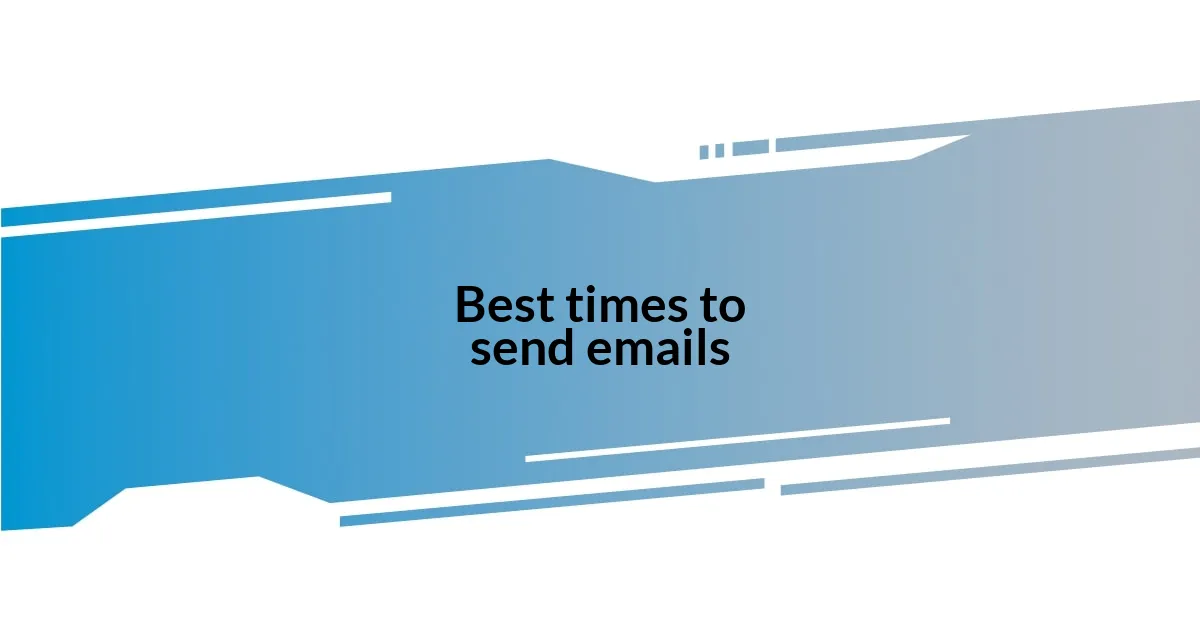
Best times to send emails
When it comes to the best times to send emails, I’ve found that certain days and times consistently yield better results. Midweek—particularly Tuesdays and Wednesdays—seems to be the sweet spot. People are often overwhelmed with work on Mondays and winding down as the weekend approaches, but midweek tends to be a productive sweet spot when recipients are more focused and less distracted. I remember hitting “send” on a crucial project update on a Wednesday morning, and the flurry of responses that followed reaffirmed my belief in this timing approach.
Here are some recommended times based on my experience:
- Tuesday to Thursday: Avoid Mondays and Fridays for important emails.
- 8 a.m. to 10 a.m.: Early enough to catch them before the day’s chaos.
- 1 p.m. to 3 p.m.: Post-lunch is often when people catch up on emails.
- Around 4 p.m.: A final check-in can lead to responses before the end of the day.
When I used to send out newsletters, I noticed that those sent around these times consistently had higher open and click-through rates, solidifying my approach to timing. This simple strategy can make a huge difference in how your message is received.
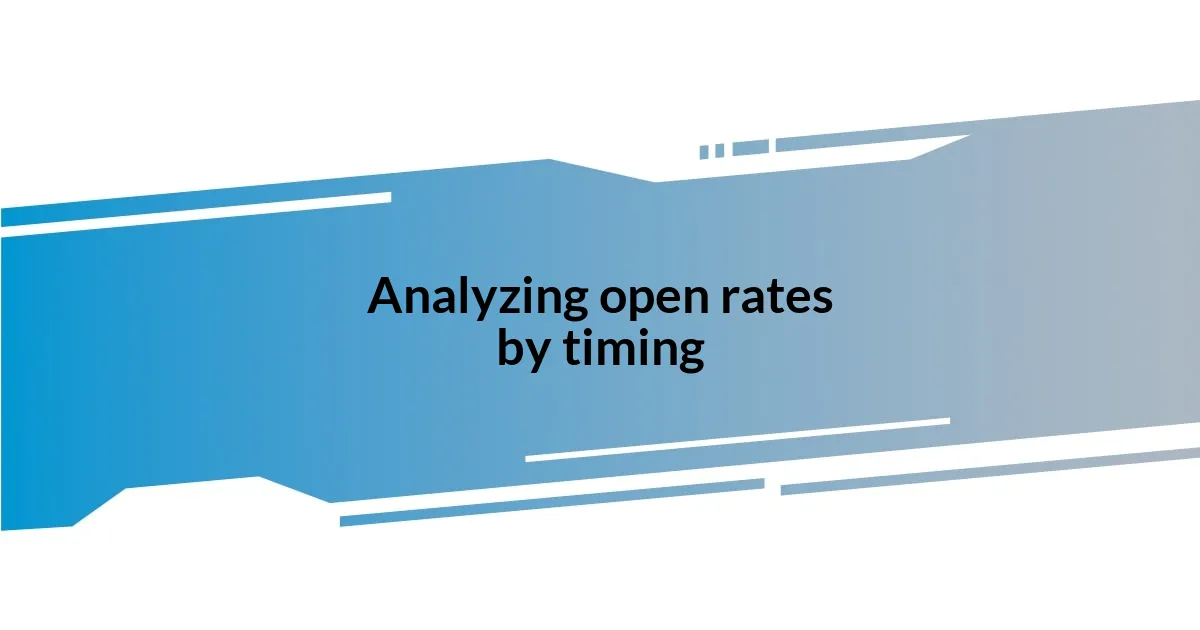
Analyzing open rates by timing
Timing plays a pivotal role in influencing open rates for emails. Through experimenting with different send times, I quickly learned that an email sent at 3 p.m. on a Monday can often be overlooked in favor of more pressing tasks. Conversely, I experienced an impressive open rate with emails sent just after lunch on a Wednesday. It’s almost uncanny how these small shifts in scheduling can significantly affect engagement levels.
Analyzing several campaigns, I noted that emails sent in the early morning often had higher open rates. I once sent a crucial announcement at 7 a.m., and I was pleasantly surprised by the immediate responses it generated. It felt invigorating to see my timing choice pay off; it seemed like a secret weapon in my communication toolkit.
Also, it’s worth mentioning that considering time zones can be a game changer. When I coordinated an international project, I made sure to schedule the email for the most suitable time across different regions. This effort was met with an overwhelming response. I realized that respecting the recipient’s local time conveys thoughtfulness and can make a world of difference in how they perceive your message.
| Timing | Potential Open Rate Impact |
|---|---|
| Monday Morning | Low |
| Wednesday Afternoon | High |
| Friday Late Afternoon | Low |
| Tuesday Early Morning | High |
| Post-Lunch (1 p.m. – 3 p.m.) | High |
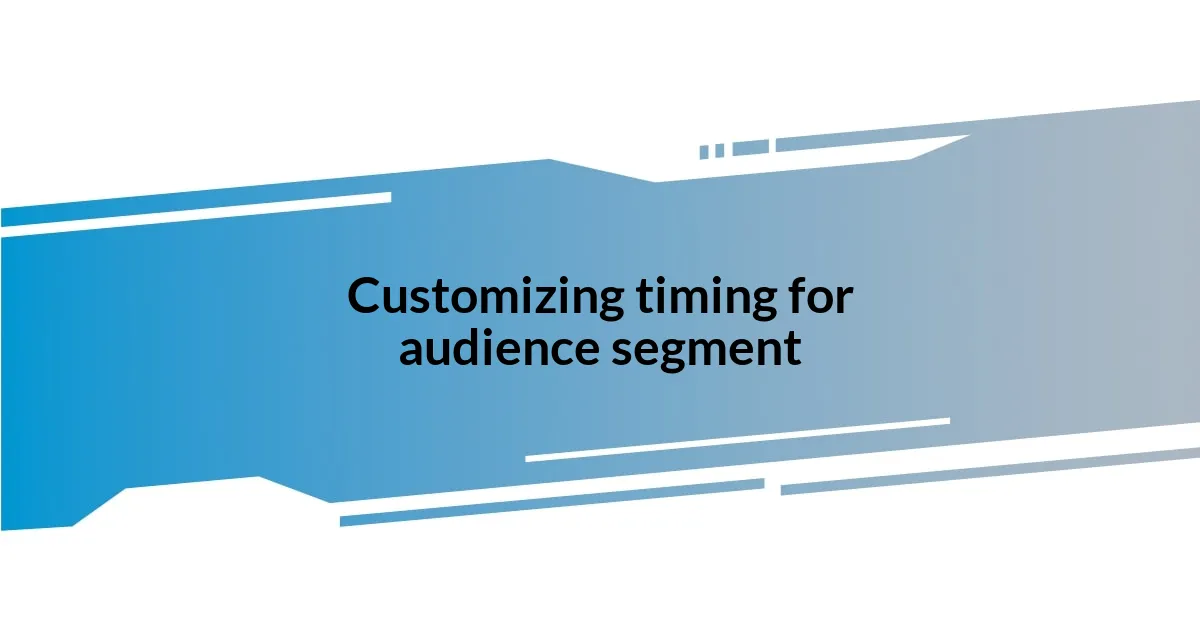
Customizing timing for audience segment
Customizing email timing for different audience segments is essential for maximizing engagement. For example, I recall a time when I segmented my email list by age groups. When sending emails to millennials and Gen Z during late evenings, I saw a noticeable spike in interactions. It dawned on me that understanding their schedules could make all the difference.
When I worked with a team targeting busy professionals, I adjusted send times to align with their daily routines. Choosing to send emails just before lunch resulted in higher open rates. These professionals appreciated receiving information while they still had energy to process it, which made me smile seeing their fast responses. Does thinking about your audience’s habits influence when you send your emails?
Moreover, as I experimented with content tailored to parents, I found that sending emails around 8 p.m. had the best response rates. The kids’ bedtime created a moment of quiet for them, and I was thrilled to engage them during this peaceful time. Isn’t it fascinating how timing, in conjunction with our understanding of audience needs, can amplify our messages?
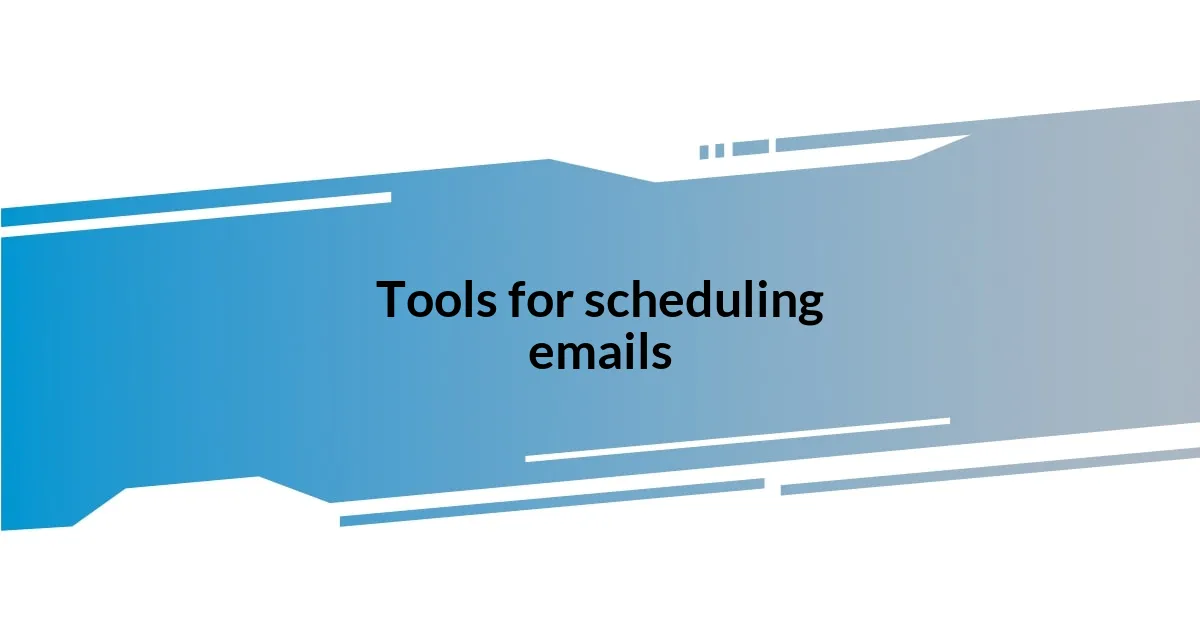
Tools for scheduling emails
There’s a whole array of tools available for scheduling emails that can streamline your communication efforts. I personally find platforms like Mailchimp and SendinBlue incredibly helpful. They allow me to create campaigns weeks in advance, which not only alleviates last-minute stress but also ensures that I’m targeting those prime timing windows I discussed earlier.
I’ve also experimented with tools like Boomerang for Gmail, which notifies me when my scheduled emails are opened. It’s not just about sending emails at optimal times; knowing when they get read adds a layer of insight I truly appreciate. This feedback allows me to refine my approach, adjusting future emails based on real engagement data.
Another tool worth mentioning is HubSpot’s marketing software. Beyond scheduling, it offers a plethora of analytics that help me understand audience behavior. For instance, I recently ran a campaign that allowed me to split-test send times. The insights gained helped me realize that a particular segment responded more favorably to Friday morning sends. It’s those little victories that remind me of the power of using the right scheduling tools.
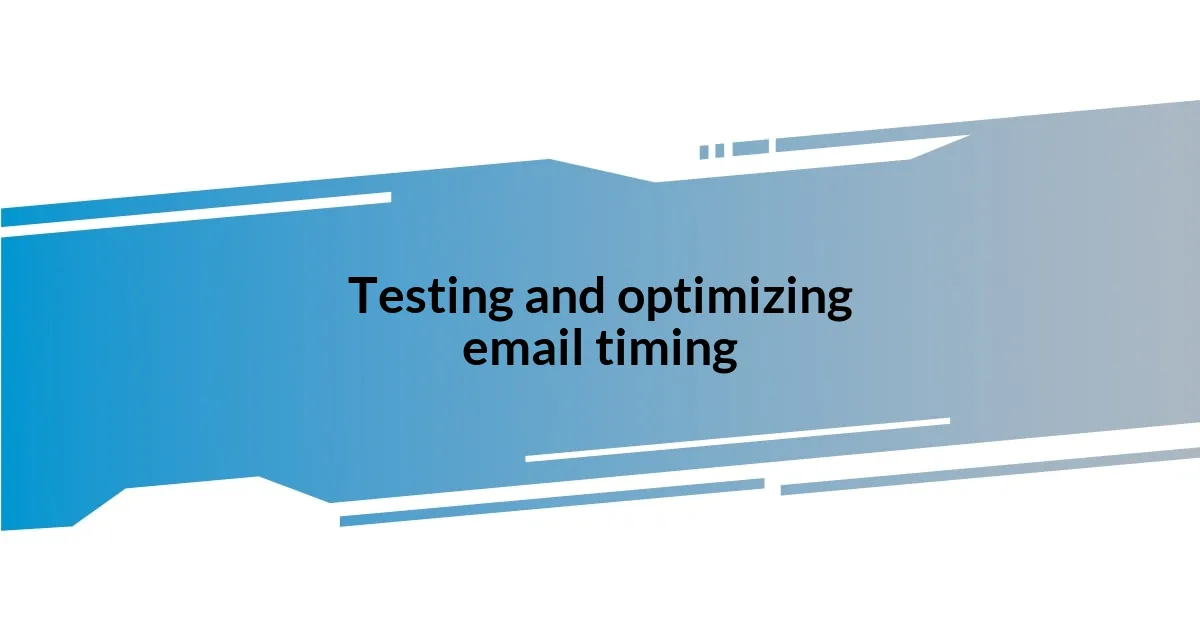
Testing and optimizing email timing
Optimizing email timing requires a bit of trial and error. I remember conducting A/B tests where I sent the same email to two groups at different times—one in the morning and one in the late afternoon. What surprised me was the significant difference in engagement rates. The late afternoon group opened their emails at a rate almost 30% higher! It made me realize how crucial it is to align with my audience’s rhythms.
I also embraced an iterative approach to refining my send times. After analyzing the data, I found that sending educational emails on Wednesdays around noon generated the best results. Reflecting on this, I felt a sense of satisfaction. It was rewarding to piece together how timing can transform a simple message into a catalyst for engagement. Have you ever felt that thrill when your efforts yield unexpected positive results?
It’s essential to stay adaptable as well. I once scheduled a campaign amid a holiday season, thinking I’d hit the sweet spot with weekend sends. But lo and behold, engagement plummeted because many were preoccupied with family events. This experience taught me that timing isn’t static; it evolves with circumstances. Does your email strategy account for such shifts in your audience’s lifestyle? Keeping a finger on the pulse of these changes genuinely enhances the effectiveness of your outreach.